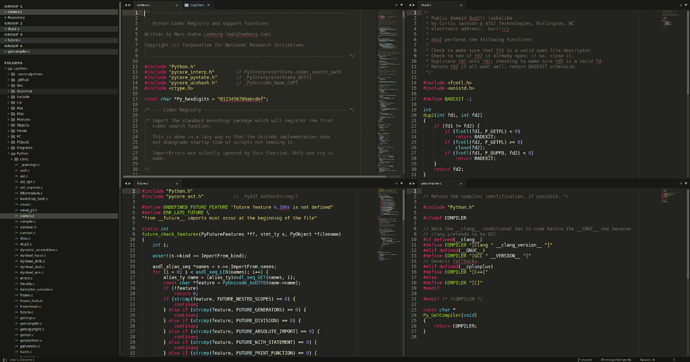

The following table compares their various features.
EDIT USING SUBLIME MERGE CODE
Others prefer code editors because of their lightweight nature. Some developers prefer IDEs because they offer a more complete development experience. Some modern code editors even have features that are very similar to IDEs, such as debugging and refactoring. They both offer syntax highlighting and code completion, and have plugins to add functionality. A code editor is a text editor with additional features specifically designed for programming.
EDIT USING SUBLIME MERGE SOFTWARE
IDEs, or integrated development environments, and code editors are two of the most commonly used tools by developers.Īn IDE is a software application that provides tools for software development. Python code is often said to be almost like pseudocode, since it allows you to express very complex algorithms in very few lines of code while being very readable.įor example, here’s an implementation of the classic quicksort algorithm in Python: def quicksort (arr ) : # base case for recursion if len (arr ) pivot ] # create subarray with elements greater than pivot # concatenate the arrays and sort recursively return quicksort (left ) + + quicksort (right ) It has a great ecosystem of different libraries, tools and frameworks that help you write better code in less time - being widely used by companies like Google, Facebook and Netflix to build large-scale applications.it has a large and very high quality standard library (which is why it’s often called a “batteries included” language).it has a huge community of developers using it every day.


you can use it on all main operating systems (Linux, Windows and macOS), and even microcontrollers.it’s a general purpose language (meaning that it allows us to do anything from building web pages to exploring data science and AI), and it’s also a multi-paradigm language (procedural, object-oriented and functional).Python is known for its ease of use, and its syntax allows programmers to express concepts in fewer lines of code than would be possible in languages such as C++ or Java. We covered this very question in detail in What Is Python and What Is It Used For?, but in brief, Python is a high-level programming language that was created in 1991 by Guido van Rossum, releasing it under an open-source license, and making it freely available to anyone who would like to use or modify the software.


 0 kommentar(er)
0 kommentar(er)
